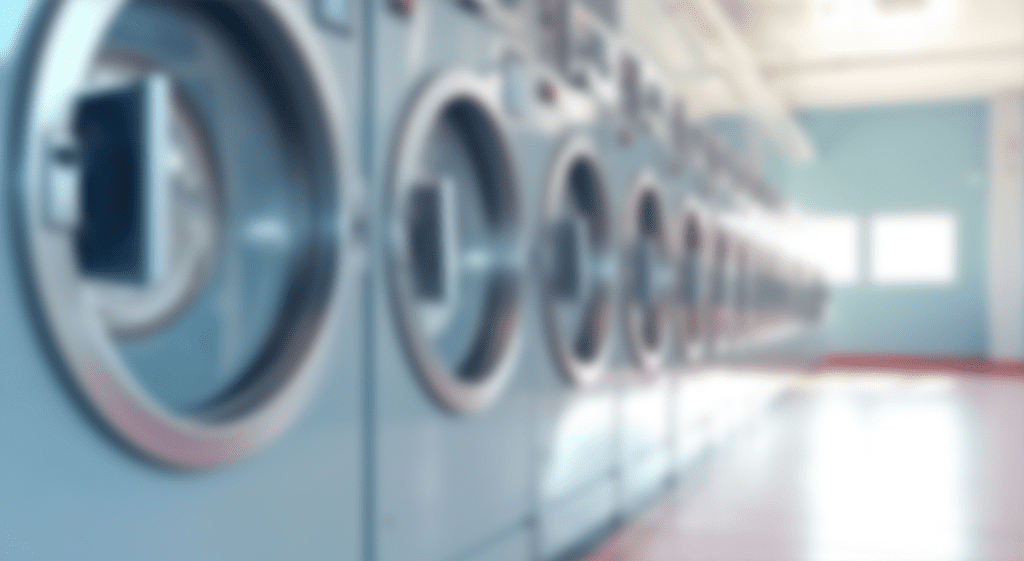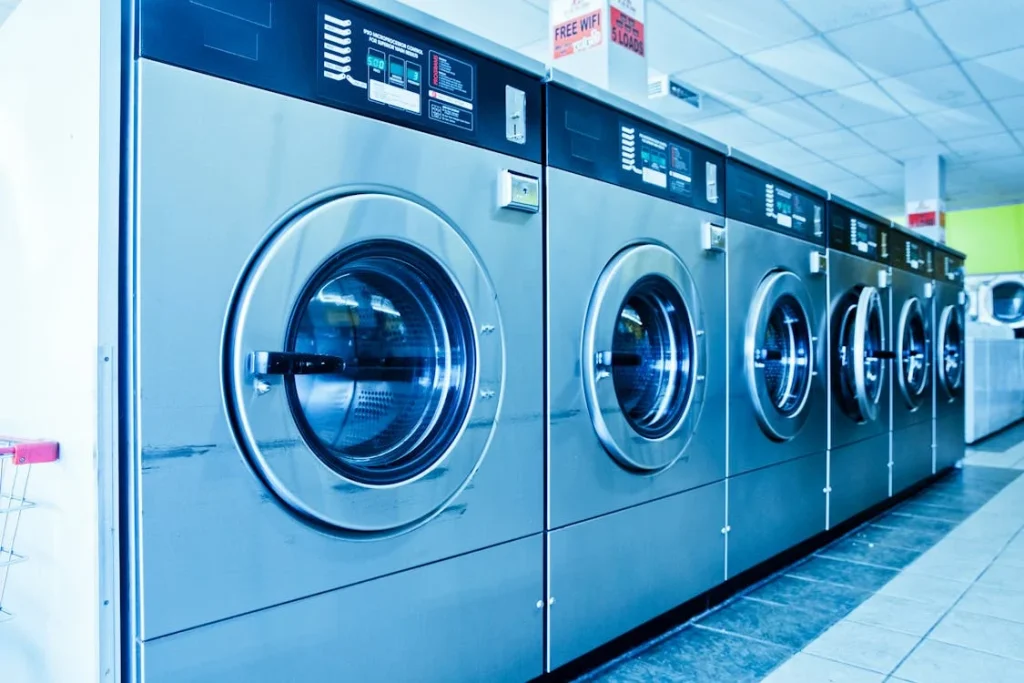Industrial laundry play a crucial role in handling large textiles used in hotels, hospitals, and commercial establishments. In this guide, we’ll explore the best practices, essential equipment, and industry innovations that make large-item laundering seamless and effective.
1. Understanding Industrial Laundry for Large Items

1.1. What Constitutes Large Items?
Large items in industrial laundry typically include bed sheets, duvets, curtains, tablecloths, and heavy-duty work uniforms. These textiles are often made from thick, durable materials designed to withstand frequent use, making their cleaning process more complex than standard garments.
1.2. Challenges in Cleaning Large Items
Handling oversized textiles presents unique challenges. They require larger washing and drying equipment, precise detergent formulations, and careful handling to prevent fabric damage. Additionally, drying these heavy fabrics evenly without causing shrinkage or discoloration demands controlled environments and specialized machinery.
2. Essential Equipment for Industrial Laundry
2.1. Heavy-Duty Washing Machines
Industrial washers are designed to accommodate high-capacity loads while ensuring thorough cleaning. They feature programmable settings for different fabrics and water levels, making them indispensable in large-scale laundry operations.
2.2. High-Capacity Dryers
Since large textiles retain a significant amount of water, industrial dryers must be equipped with high-speed rotation and moisture sensors to ensure optimal drying without overheating or damaging the fabric.
2.3. Advanced Ironing and Folding Systems
Flatwork ironers help in pressing linens, giving them a crisp, professional appearance. Automated folding machines further streamline operations by folding sheets and towels consistently, reducing manual labor.
2.4. Automated Sorting and Handling Systems
To enhance efficiency, many industrial laundries incorporate automated sorting systems that separate textiles based on type, fabric, and cleaning requirements. These technologies minimize human error and speed up the laundering process.
3. Best Practices for Cleaning Large Items
3.1. Sorting and Pre-Treatment
Before washing, large items should be sorted by fabric type, color, and level of soiling. Pre-treatment of stains with specialized detergents prevents them from setting during washing.
3.2. Choosing the Right Detergents and Chemicals
Industrial-grade detergents are formulated to tackle tough stains while maintaining fabric integrity. Opting for pH-balanced and eco-friendly chemicals ensures effective cleaning without harming the environment.
3.3. Optimal Washing and Drying Techniques
Selecting the right wash cycle is crucial. Overloading machines can lead to inadequate cleaning, while excessive water temperatures can weaken fibers. Drying should be done in well-ventilated, temperature-controlled environments to maintain fabric quality.
3.4. Quality Control Measures
Implementing strict quality control—such as inspecting fabrics post-wash—ensures cleanliness and extends the lifespan of textiles. Regular equipment maintenance also prevents operational disruptions.
4. Energy Efficiency and Sustainability in Industrial Laundry
4.1. Water Conservation Techniques
Recycling water through filtration systems and using low-water washers help reduce consumption without compromising cleaning efficiency.
4.2. Energy-Saving Equipment and Technologies
Modern laundry facilities use heat recovery systems and energy-efficient motors to cut down on power usage, significantly reducing operational costs.
4.3. Eco-Friendly Detergents and Chemicals
Using biodegradable detergents and enzyme-based cleaners ensures that industrial laundries comply with environmental regulations while maintaining high hygiene standards.
5. Folding Techniques for Large Linens
Proper folding is essential for maintaining the quality and appearance of large linens. Here are some basic and advanced folding techniques:
- Basic folding: Fold linens in half lengthwise and then in half again, creating a rectangular shape.
- Advanced folding: For items like sheets, fold them in half lengthwise and then fold the corners inward to create a neat, square shape.
6. Quality Control and Inspection
Industrial laundry services implement strict quality control measures to ensure that items are cleaned to the highest standards. This often involves visual inspections for cleanliness, damage, and dimensional accuracy.
7. Packaging and Storage
After cleaning and folding, large items are typically packaged for storage or delivery. Packaging materials and methods may vary depending on the specific needs of the customer.
8. Environmental Considerations
Industrial laundries are increasingly focused on sustainability and environmental responsibility. This includes efforts to conserve water and energy, reduce chemical usage, and properly dispose of waste.
9. Choosing the Right Industrial Laundry Provider
When selecting an industrial laundry provider, consider the following factors:
- Experience and expertise: Look for a provider with a proven track record in handling large-item laundry.
- Equipment and facilities: Ensure that the provider has the necessary equipment to handle your specific needs.
- Quality standards: Ask about the provider’s quality control measures and certifications.
- Customer service: Good customer service is essential for a positive experience.
10. Common Challenges and How to Overcome Them
10.1. Handling Stubborn Stains on Large Fabrics
Pre-soaking in enzyme-based solutions can break down grease and protein-based stains, making them easier to remove during the wash cycle.
10.2. Preventing Fabric Damage During Washing
Using gentle washing cycles, proper load balancing, and high-quality fabric softeners helps maintain textile durability and prevent premature wear and tear.
10.3. Ensuring Hygiene and Compliance with Industry Standards
Implementing rigorous sanitation protocols and adhering to industry regulations ensure that textiles remain hygienic, particularly in healthcare and hospitality sectors.
11. The Future of Industrial Laundry for Large Items
11.1. Automation and AI in Industrial Laundry
The integration of AI-driven washers and dryers allows for real-time monitoring of washing parameters, improving efficiency and reducing waste.
11.2. Trends in Smart Laundry Systems
The rise of IoT-enabled laundry systems enables remote monitoring, predictive maintenance, and energy optimization, setting new standards for industrial laundries.
12. Conclusion
Industrial laundry services for large items require strategic planning, specialized equipment, and adherence to best practices. By leveraging advanced technology and sustainable practices, businesses can optimize operations while reducing costs and environmental impact.
Looking to upgrade your industrial laundry setup? Contact us today to discover efficient, sustainable solutions tailored to your needs.
13. FAQs
1. What are the key differences between household and industrial laundry machines?
Industrial machines have higher capacities, stronger motors, and specialized settings for large textiles, unlike standard household washers.
2. How can businesses improve efficiency in industrial laundry?
Automating processes, using high-capacity machines, and adopting energy-efficient systems significantly enhance efficiency.
3. What’s the best way to prevent shrinkage in large fabrics?
Using controlled drying temperatures, pre-washing new textiles, and selecting gentle wash cycles help prevent shrinkage.
4. Are eco-friendly detergents effective in industrial laundry?
Yes, modern biodegradable detergents are formulated to break down tough stains while being safe for fabrics and the environment.
5. How often should industrial laundry equipment be maintained?
Regular maintenance—such as cleaning filters, checking belts, and inspecting water levels—should be done weekly to ensure optimal performance.
Here are some other articles that we think might interest you:
What is the definition of Industrial Laundry?


